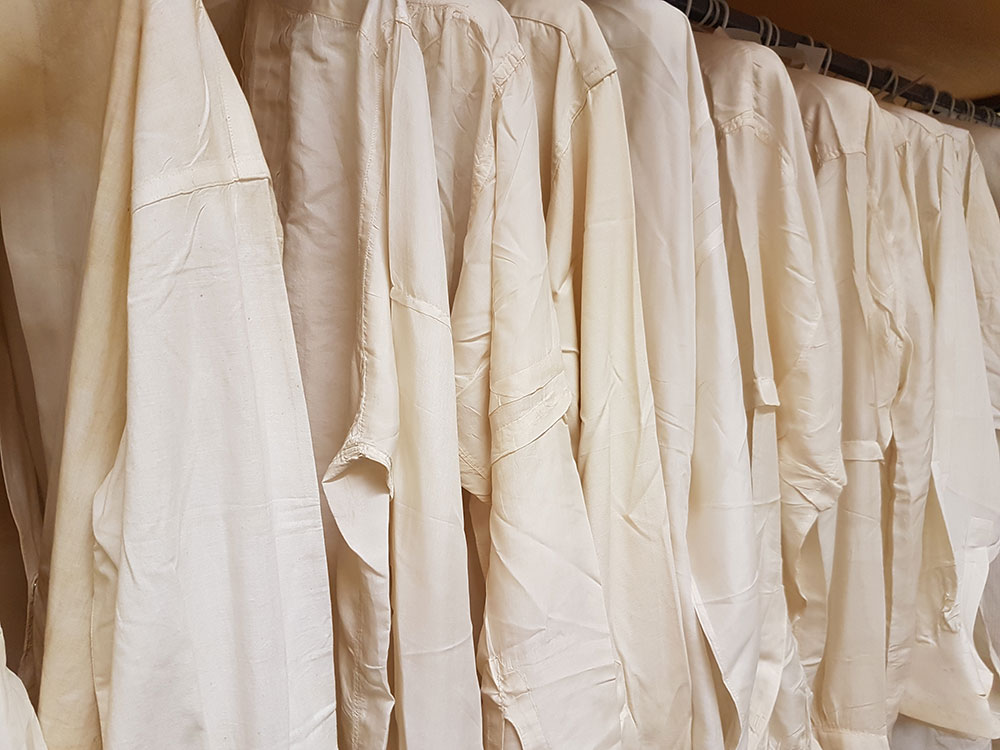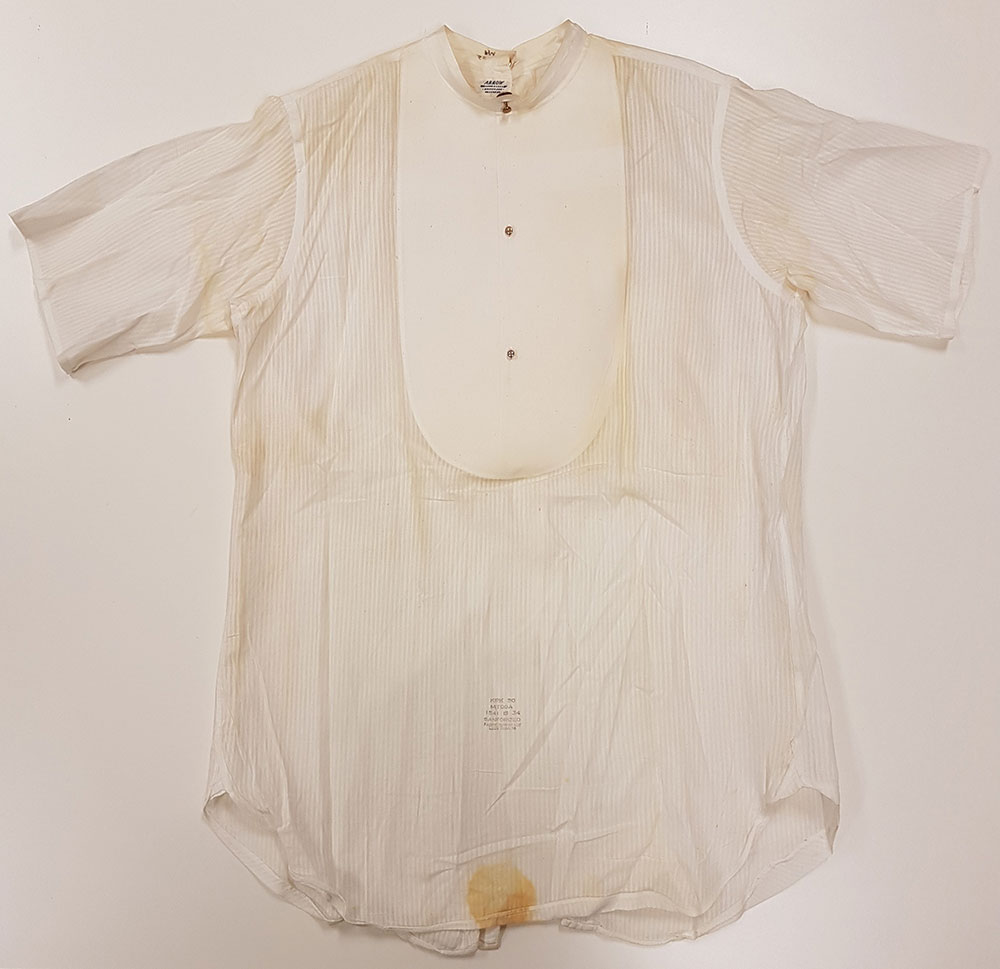Research
In removing the white shirt from its hanging rack, two things become apparent: the sleeves, once long, have been cut then hand-stitched to finish above the elbow; and now-yellowed sweat stains bloom under the arms. I’m looking at a stiff-fronted dress shirt worn by Percy Grainger, composer, arranger and pianist. When worn under his black tailcoat neither of these would be visible. But in looking at the shirt, one of scores in the fascinating collection of the Grainger Museum, I wonder two things: were the sleeves shortened to enhance movement in his arms during performance, and just how much did he sweat playing in concert halls before his adoring audiences?
Faded, frayed, stained or torn clothes might embarrass us when we wear them (or they might instead be deliberately stressed for effect), but for the curator and historian these flaws are marks from the past, an intimate record of wear. This is one of the reasons why clothes worn, and loved, are important to this project. We want to better understand not only why clothes were chosen at a moment in time, but how they were worn, how they felt on the body and the memories that are bundled up in them.
When clothing enters a museum collection, the inside is examined just as closely as the outside. This seems almost counter-intuitive because we’ll never display clothing inside-out – although I think an exhibition like this would surprise and delight many people.
But taking a ‘slow approach to seeing’ can reveal all kinds of hints about a garment’s maker, its wearer, and its life history. I’ve examined clothes heavily mended and cleverly adjusted, with these barely detectable on the visible surfaces; stained with red wine or make up; with stitching strained, elastic stretched, hems frayed or raw edges unfinished. Donors are sometimes hesitant to gift clothing to museums in less-than-perfect condition, but blemishes have much to tell us, especially if we take up Ingrid Mida and Alexandra Kim’s challenge to be dress detectives.
Perhaps they were worn over long periods of time or by multiple wearers – recycling clothing is nothing new. Maybe they were a party favourite or considered good under the hot sun. Their wearer might have put on weight or been too busy to shorten hems too long. They might have been made quickly in a Bangladeshi factory, or slowly and with love.
In carefully looking at the surfaces of clothing we can begin to better see how fabric holds these markings and memories of the bodies it clothed – and we can start to ‘read’ their material qualities. So each time Melissa and I head into museum collection stores, we’ll be looking out for these messages from the past and alert to what they might tell us.

‘White dress shirts worn by Percy Grainger’, Grainger Museum Collection, University of Melbourne. Courtesy Grainger Museum.

‘Shirt worn by Percy Grainger’, made by Arrow, U.S.A., 04.6894, Grainger Museum Collection, University of Melbourne. Courtesy Grainger Museum
References
Ingrid Mida and Alexandra Kim, The Dress Detective: A Practical Guide to Object-Based Research in Fashion (London: Bloomsbury, 2015).
